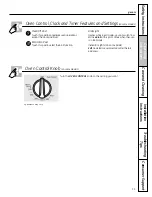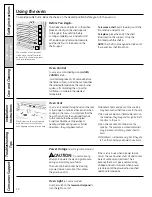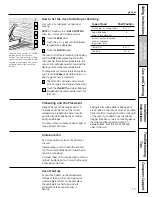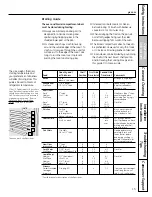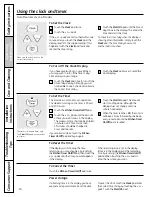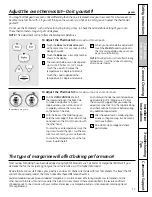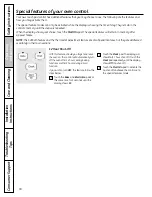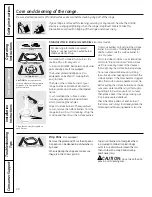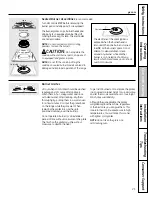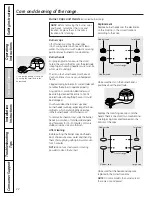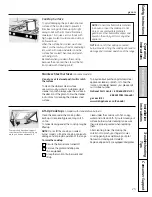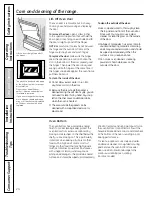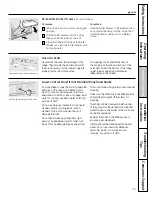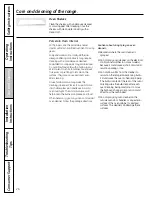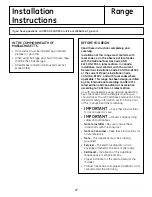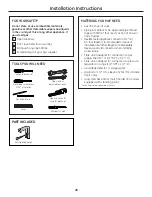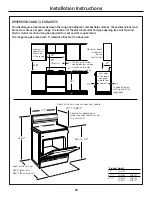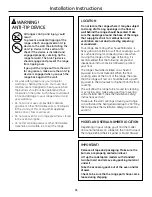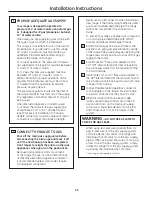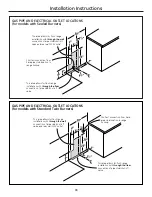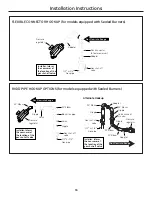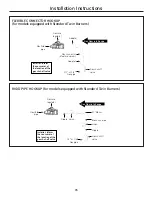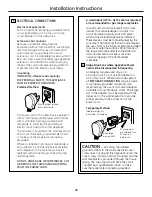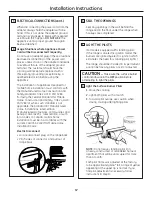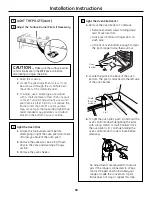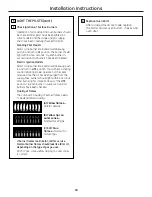
25
Removable Broiler Drawer
(on some models)
To remove:
When the broiler is cool, remove any grid
and pan.
Pull the broiler drawer out until it stops,
then push it back in about one inch.
Grasp the handle, lift and pull the broiler
drawer out. Clean the broiler drawer with
hot soapy water.
To replace:
Hold the broiler drawer in the raised position
as you slide it partway into the range. Then
lower the drawer and push it completely
closed.
ge.com
Vent appearance and location vary.
Pull the knob straight off the stem.
Oven Air Vents
Never block the vents (air openings) of the
range. They provide the air inlet and outlet
that are necessary for the range to operate
properly with correct combustion.
Air openings are located at the rear of
the cooktop, at the top and bottom of the
oven door, and at the bottom of the range,
under the kick panel or broiler drawer
(depending on the model).
Lower Control Panel (Front Manifold Panel) and Knobs
It’s a good idea to wipe the control panel after
each use of the oven. Use a damp cloth to
clean or rinse. For cleaning, use mild soap
and water or a 50/50 solution of vinegar and
water. For rinsing, use clean water. Polish dry
with a soft cloth.
Do not use abrasive cleansers, strong liquid
cleaners, plastic scouring pads or oven
cleaners on the control panel—they will
damage the finish.
Do not bend knobs by pulling them up or
down or by hanging a towel or other such
loads. This can damage the gas valve shaft.
The control knobs may be removed for easier
cleaning.
Make sure the knobs are in the
OFF
positions
and pull them straight off the stems for
cleaning.
The knobs can be cleaned in a dishwasher
or they may also be washed with soap and
water. Make sure the insides of the knobs are
dry before replacing.
Replace the knobs in the
OFF
position to
ensure proper placement.
Metal parts can be cleaned with soap and
water. Do not use steel wool, abrasives,
ammonia, acids or commercial oven
cleaners. Dry with a soft cloth.
Operating
Instructions
Car
e
and
Cleaning
Installation
Instructions
Tr
oubleshooting
Tips
Safety
Instructions
Consumer
S
uppor
t

